This site uses affiliate links, meaning that if you make a purchase through our links, we may earn an affiliate commission.
Nestled on the banks of the majestic Nile River, the Temple of Kom Ombo beckons with its captivating history and remarkable architecture. This temple is unlike any other, as it stands as a testament to the devotion of not one, but two triads of deities.
The eastern half of this splendid temple is dedicated to the first triad, which includes the crocodile god Sobek, the venerable god of the Nile and creator of the world, alongside his divine companions Hathor and their son Khonsu.
Meanwhile, the western side of the temple pays homage to the second triad, featuring the majestic falcon god Haroeris (Horus the Elder), the guardian of the sky and the king’s protector, along with his wife Tasenetnofret and their beloved child Panebtawy.
While the ravages of time and human interference have eroded many of the temple’s original structures and defaced numerous reliefs, a remarkable glimpse into its past remains. What we see today is a testament to the enduring legacy of the Ptolemaic Period, with construction spanning from 108 to 47 BC.
Join us as we embark on a journey to discover the hidden wonders of the Temple of Kom Ombo.
In this blog post, we will unveil 9 unmissable treasures that will enrich your visit to this awe-inspiring sanctuary. Whether you’re planning a trip or simply seeking to delve deeper into history and culture, this guide will illuminate your path through the Temple of Kom Ombo.
- 1. Where Is the Temple of Kom Ombo Located
- 2. Map of the Temple of Kom Ombo
- 3. What to See at the Temple of Kom Ombo (9 Things You Can't Miss)
- 3.1. The Courtyard of Augustus
- 3.2. The Hypostyle Halls
- 3.3. The Antechambers and the Sanctuary
- 3.4. The Relief of the Ancient Egyptian Calendar
- 3.5. The Relief of Women Sitting on Birthing Chairs
- 3.6. The Reliefs of Surgical and Ritualistic Instruments
- 3.7. The Nilometer
- 3.8. The Pylon
- 3.9. The Crocodile Mummy Museum
- 4. Intrepid Scout's Tips for Visiting the Temple of Kom Ombo
Where Is the Temple of Kom Ombo Located
The Temple of Kom Ombo is situated on the picturesque banks of the Nile River, nestled snugly between the enchanting cities of Edfu and Aswan.
Most travelers, much like myself, embark on their Kom Ombo adventure via one of the many cruise ships that gracefully navigate the storied waters of the Nile.
My personal journey to this ancient marvel unfolded on the second day of my Nile River cruise. Anticipation ran high as my knowledgeable tour guide instructed me to prepare for an early start, setting our meeting time at 6:30 a.m.
His wisdom in choosing this early hour became evident as we approached the temple grounds while the world was still cloaked in darkness.
It was a moment of pure enchantment, as the temple’s grandeur was softly illuminated, and the tranquil surroundings whispered secrets of a bygone era.
As the sun began its ascent, I stood in awe, witnessing a breathtaking sunrise that cast its golden rays upon the temple, gradually revealing every intricate detail. The hushed beauty of this moment, unburdened by crowds, allowed me to truly connect with the ancient mystique of Kom Ombo.
Map of the Temple of Kom Ombo
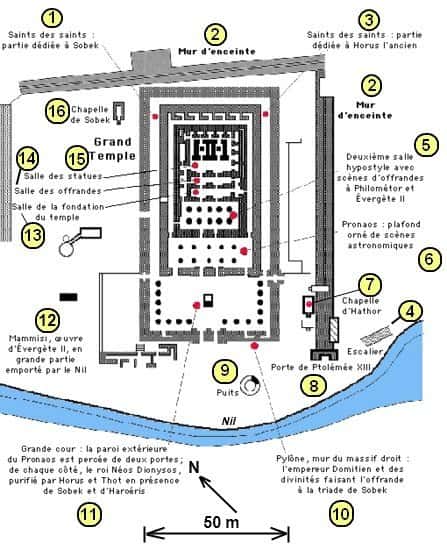
Image and Description Credit: Drawing by Gérard Ducher (French version) and Janmad (description for English and Polish version) via Wikimedia Commons
1. The Sanctuary of Sobek
2. The Wall surrounding the Temple of Kom Ombo
3. The Sanctuary of Horus
4. The Staircase
5. The Hypostyle hall
6. Pronaos
7. The Chapel of Hathor
8. The Gate of Ptolemy XII Auletes
9. The Well
10. Pylon
11. The Great Court with the Altar
12. Mammisi (Birth House)
13. Hall of the Temple’s Fundation
14. Hall of victims
15. Hall of statues
16. The Chapel of Sobek
What to See at the Temple of Kom Ombo (9 Things You Can't Miss)
The Courtyard of Augustus
The Courtyard of Augustus at the Temple of Kom Ombo once boasted a grandeur that enveloped visitors with its majestic colonnades, forming an impressive perimeter around its northern, western, and southern sides.
A total of 16 stately columns once graced this courtyard, lending it an air of architectural splendor. However, the passage of time has left behind only the lower halves of these columns, a poignant testament to the enduring resilience of the temple.
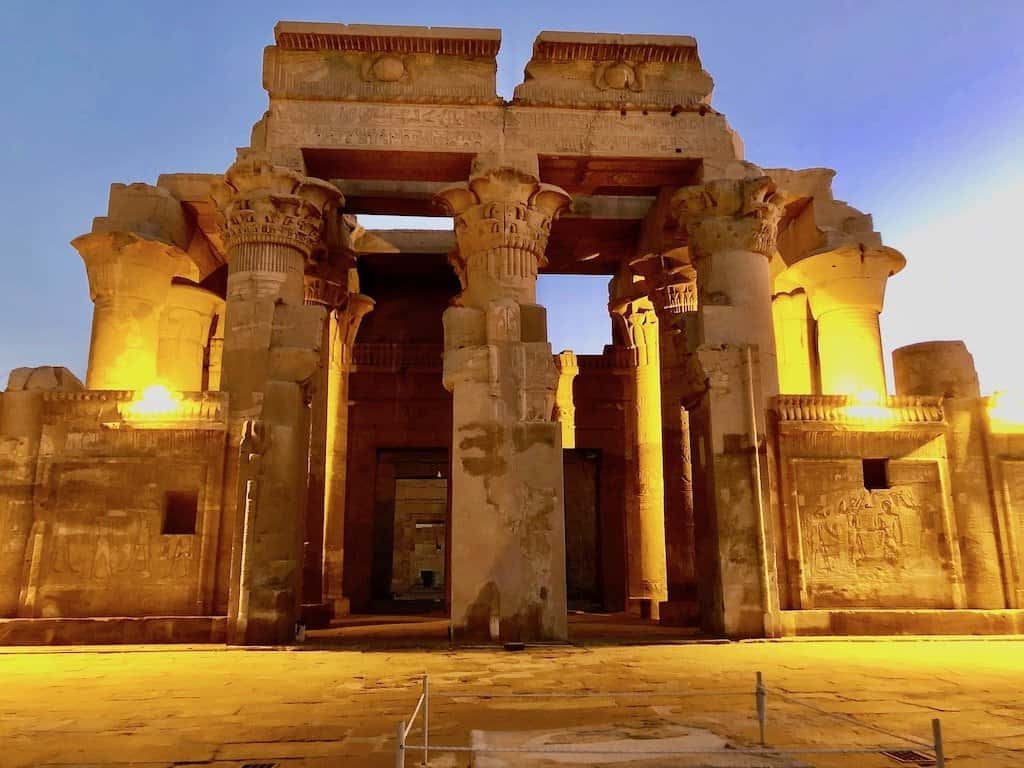
Courtyard at the Temple of Kom Ombo / What to See at the Temple of Kom Ombo
In the heart of this courtyard, a captivating relic takes center stage: the remnants of a square altar base. This ancient structure serves as a focal point, carrying the weight of centuries of rituals and devotion.
Flanking this central altar are small basins, each meticulously crafted to receive offerings dedicated to the temple’s revered deities.
As you stand amidst the echoes of history in this hallowed space, you can’t help but feel a profound connection to the spiritual and cultural significance that once thrived within the Temple of Kom Ombo.
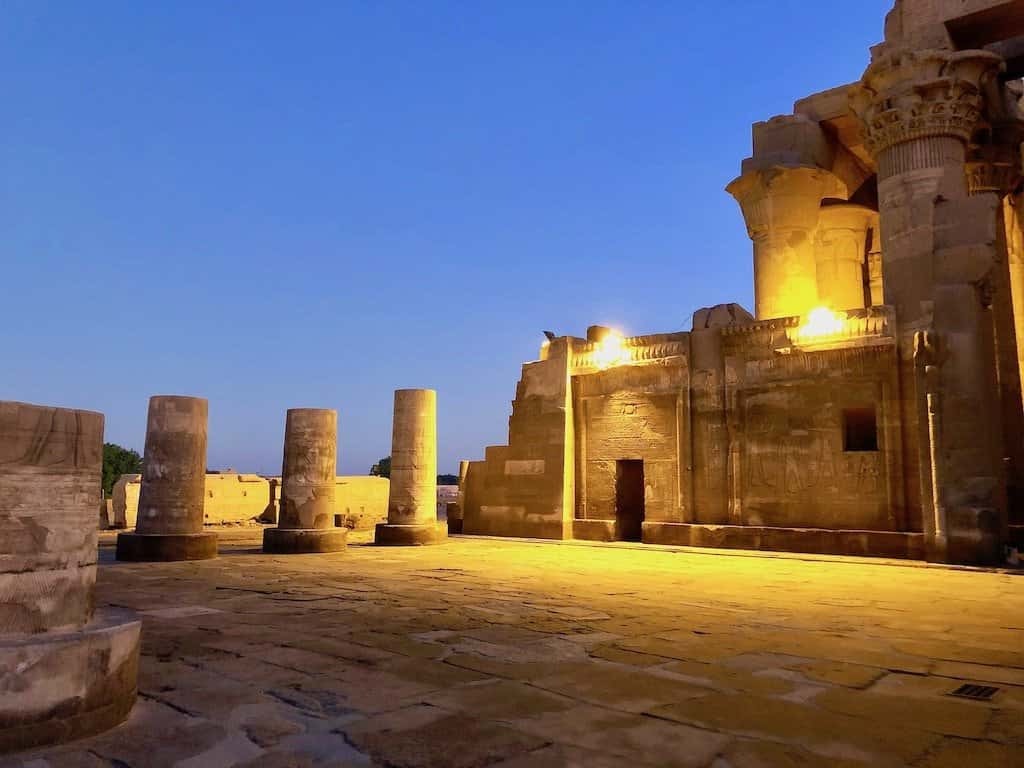
Courtyard at the Temple of Kom Ombo / What to See at the Temple of Kom Ombo
Among the many fascinating features of the Temple of Kom Ombo, one stands out as particularly striking: the intricately carved stone screens adorning the courtyard’s eastern and western boundaries.
Of these, the screen along the eastern side stands as a remarkable testament to ancient craftsmanship, remarkably well-preserved through the ages.
This exceptional stone screen unfolds a captivating tableau, where the falcon-headed deity Haroeris and the ibis-headed Thoth take center stage.
They are depicted in harmonious conjunction with none other than Ptolemy XII Neos Dionysos, a historical figure of considerable significance in the temple’s narrative.
The delicate details and artistic precision of this portrayal offer a vivid glimpse into the religious and cultural fusion that characterized this ancient era, showcasing the enduring legacy of the temple and its profound ties to Egypt’s rich history.
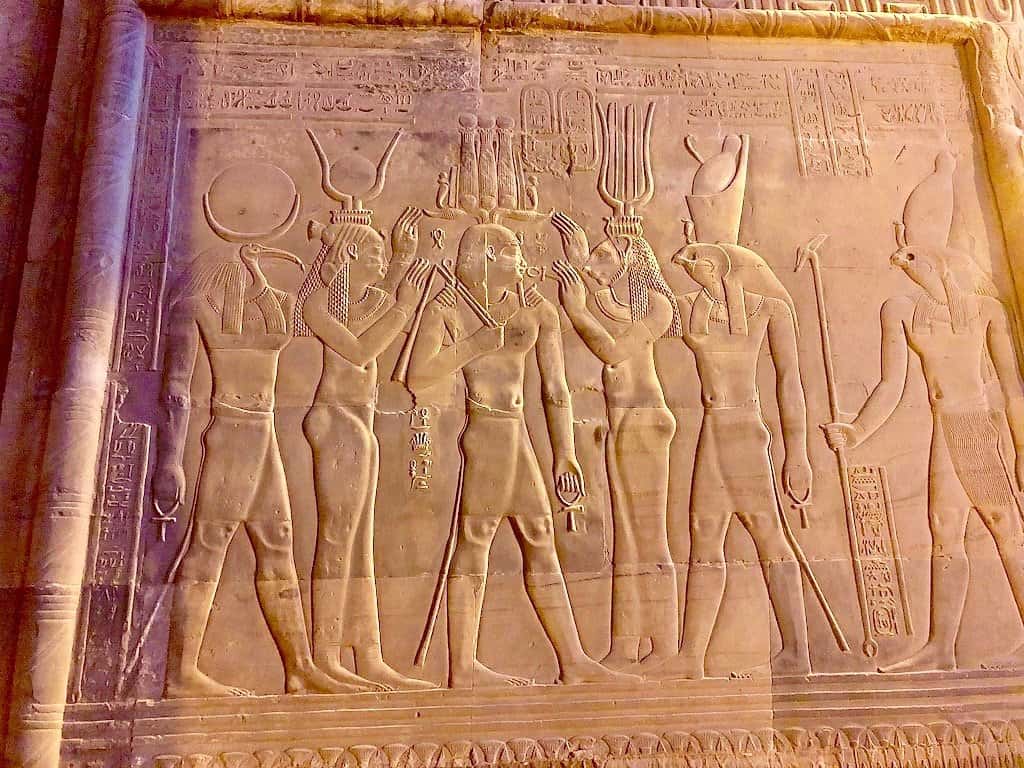
Stone Screens at the Temple of Kom Ombo / What to See at the Temple of Kom Ombo
The Hypostyle Halls
Directly across the courtyard lies the entrance to the first Hypostyle Hall, a grand chamber that ushers visitors into an equally impressive second Hypostyle Hall, slightly smaller in scale but sharing a similar architectural design.
Both halls feature two rows of five imposing, free-standing columns, each adorned with exquisitely decorated capitals that testify to the artistry of the era.
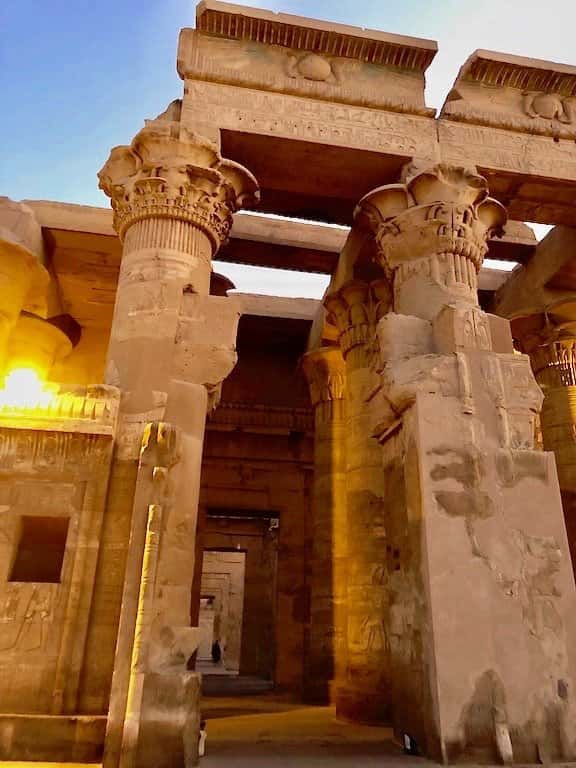
Hypostyle Halls at the Temple of Kom Ombo / What to See at the Temple of Kom Ombo
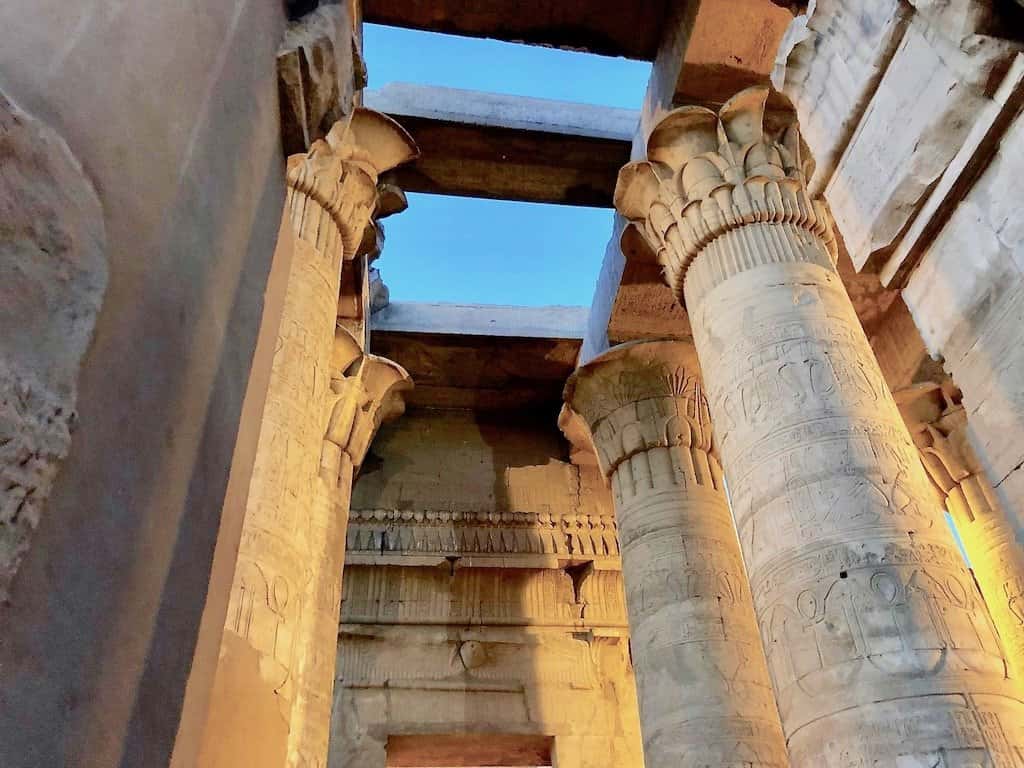
Hypostyle Halls at the Temple of Kom Ombo / How to Visit and What to See in Saqqara
While you explore, remember to cast your gaze upward to behold the enchanting ceiling adorning the main two aisles.
Here, you will find vibrant paintings depicting soaring vultures, a symbol deeply intertwined with ancient Egyptian mythology and spirituality.
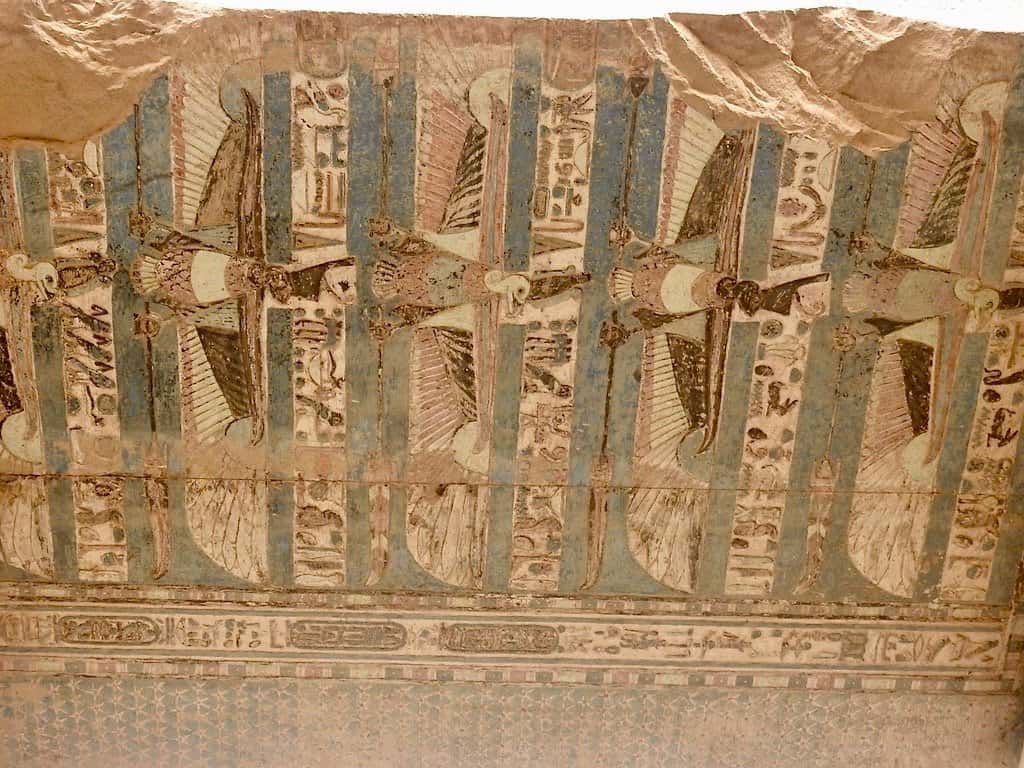
Beautifully decorated ceiling at the Hypostyle Halls at the Temple of Kom Ombo / What to See at the Temple of Kom Ombo
The Hypostyle Halls reveal a treasure trove of beautiful reliefs, each one a piece of the temple’s rich history etched in stone.
Among these captivating depictions, be sure to seek out the representation of the revered deities Horus and Thoth, ceremoniously pouring consecration water over none other than Ptolemy XII.
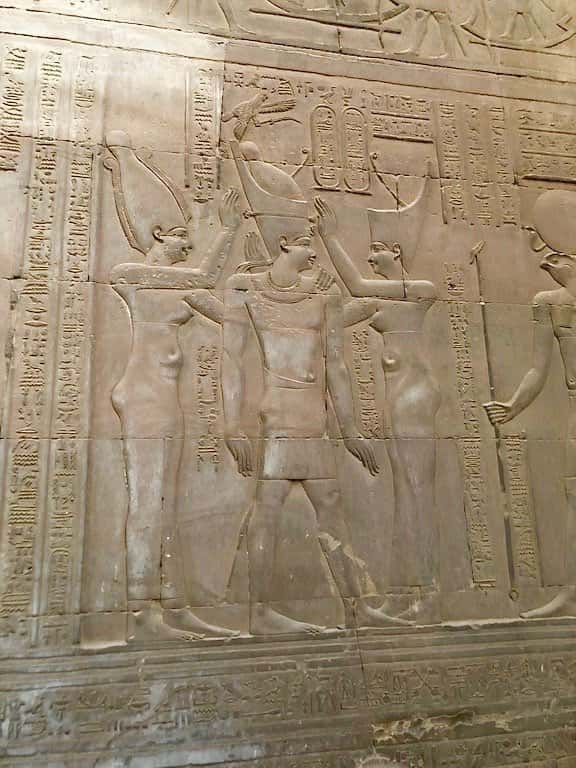
Reliefs inside the Hypostyle Halls / What to See at the Temple of Kom Ombo
This portrayal provides a poignant connection to the temple’s sacred rituals and the enduring legacy of its patrons.
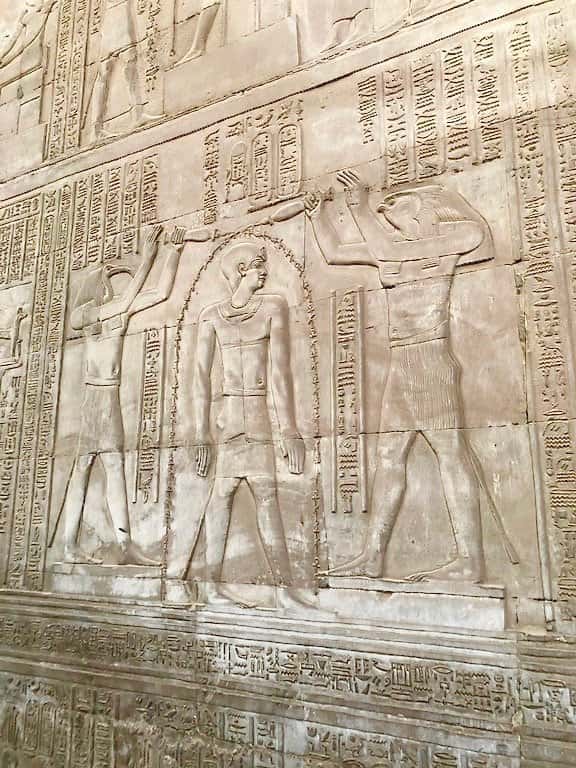
Reliefs inside the Hypostyle Halls / What to See at the Temple of Kom Ombo
The Antechambers and the Sanctuary
Beyond the grandeur of the Hypostyle Halls lies a journey into the heart of the Temple of Kom Ombo, as you step into a succession of three Antechambers. These transitional spaces serve as a captivating prelude to the temple’s innermost sanctuaries, where ancient mysteries await.
To the left, an inviting sanctuary is dedicated to Haroeris, while to the right, another sacred space reveres the crocodile god, Sobek. These inner Sanctuaries offer a profound connection to the temple’s divine purpose and the veneration of its dual triads of deities.
As you explore further, you’ll discover that these sanctuaries are enveloped by a ring of ten smaller cult chapels, each bearing its unique significance in the religious tapestry of the temple.
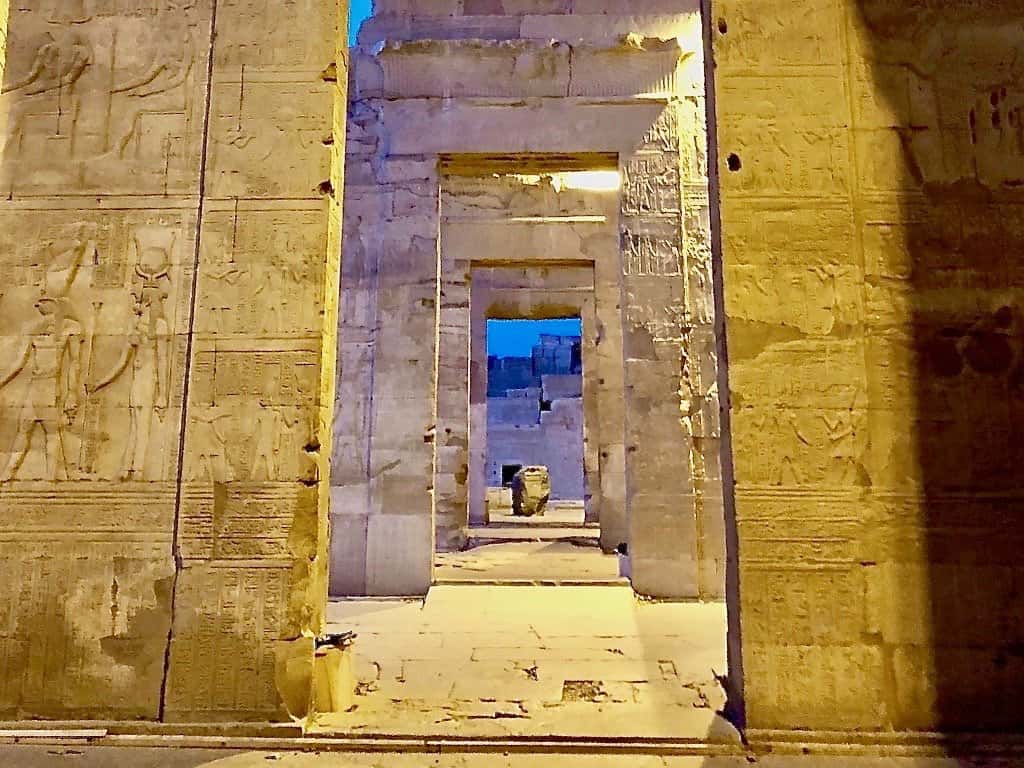
Antechambers at the Temple of Kom Ombo / What to See at the Temple of Kom Ombo
Intriguingly, my knowledgeable guide revealed that beneath the inner reaches of the temple lie a labyrinth of chambers, some of which possess three distinct levels.
These subterranean chambers hold their own secrets, concealing hidden passages that whisper tales of the temple’s storied past.
The Relief of the Ancient Egyptian Calendar
Within the inner section of the outer enclosure wall, a remarkable relief graces the stone surface—an embodiment of the ancient Egyptian calendar. This intricate depiction serves as a meticulously crafted record of yearly events closely tied to the rituals and life of the Temple of Kom Ombo.
Functioning as a sacred agenda, this calendar played a vital role in the organization and scheduling of services and rituals conducted by the temple’s devoted priests and priestesses.
Comprising three distinct panels, it reveals its secrets when read from right to left.
The first panel offers insight into the date, month, and the prevailing season. It marks the passage of time and the alignment of the temple’s activities with the natural world.
The second panel delves into the specific types of services conducted, shedding light on the intricacies of the temple’s religious duties.
Lastly, the third panel delves into the realm of local gods, connecting the temple’s practices with its divine patrons.
This ancient Egyptian calendar, a testament to meticulous planning and reverence for the cycles of nature, adhered to a structured system:
- A year was thoughtfully divided into three seasons: the flood season, the cultivation season, and the harvesting season.
- Each season was further divided into four months, reflecting the agricultural rhythm of ancient Egypt.
- These months were subdivided into three weeks, and each week was meticulously segmented into ten days.
The calendar’s existence not only attests to the precision and organization of temple life but also invites us to step back in time and appreciate the profound connection between ancient Egyptians and the natural world that sustained them.
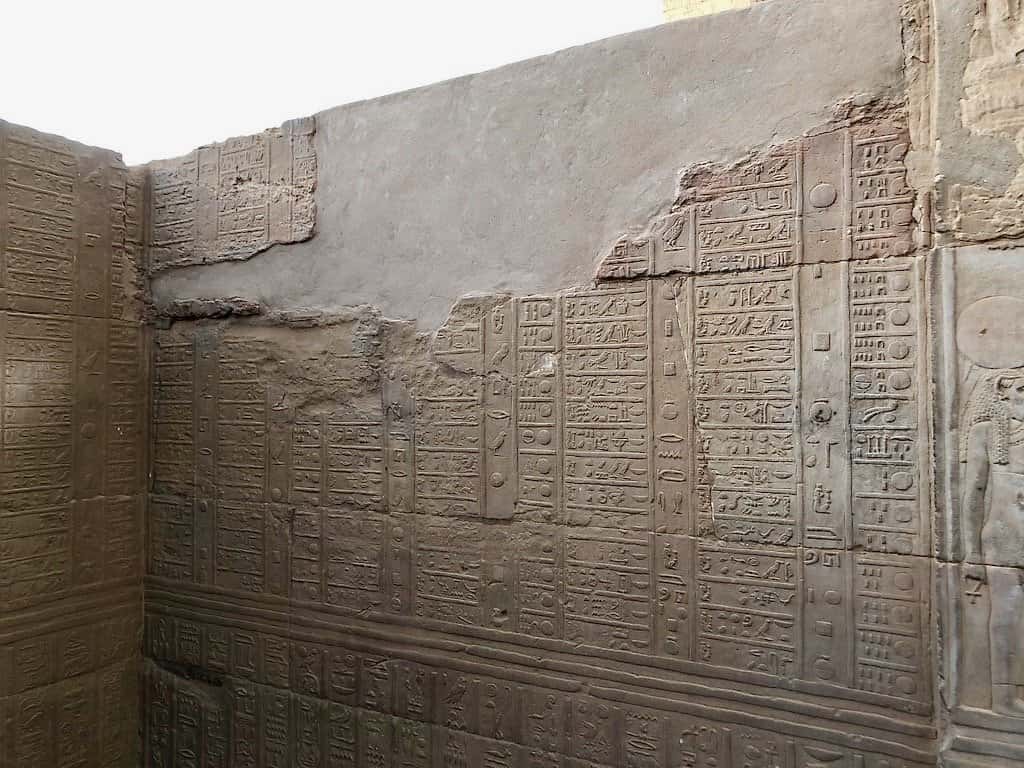
The relief of the ancient Egyptian calendar / What to See at the Temple of Kom Ombo
This is really fascinating, and I want to show you how to read the first panel which is the description of days, months, and seasons.
So, to start with:
- the symbol of the sun disk means a new day
- next, an inverted U represents the number ten
- finally, the symbol I represents the number one
If you look at the picture right below, you can see the sun disk, which means that it is a new day. Then, you have two symbols of an inverted U, and, each represents the number ten, so in total, we have the number twenty. Finally, we have eight symbols I and each stands for the number one. So, it totals eight. All in all, we have a new day and it is the twenty-eight of the month. I think this is so cool!

The relief of the ancient Egyptian calendar / What to See at the Temple of Kom Ombo
Next section: first of all, we have the sun disk, which as you remember stands for a new day. Then, you can see two inverted U, which is twenty, right? Finally, there is a new symbol that looks like a sun disk with a dash in the middle. It stands for number nine. So we know, that we have the twenty-ninth of the month. Isn’t this awesome? You are reading hieroglyphs!

The relief of the ancient Egyptian calendar / What to See at the Temple of Kom Ombo
Next section: you see a character like an animal tail which stands for the 30th and the end of the month. As you remember, each month had 30 days.

The relief of the ancient Egyptian calendar / What to See at the Temple of Kom Ombo
Next section: the cycle starts again, reporting a new month. It is the 3rd month of the harvesting season (shows open flowers). And, the symbol of the sun disk, which means a new day. And, the symbol I for number one, which is the first day of the third month of the new season.
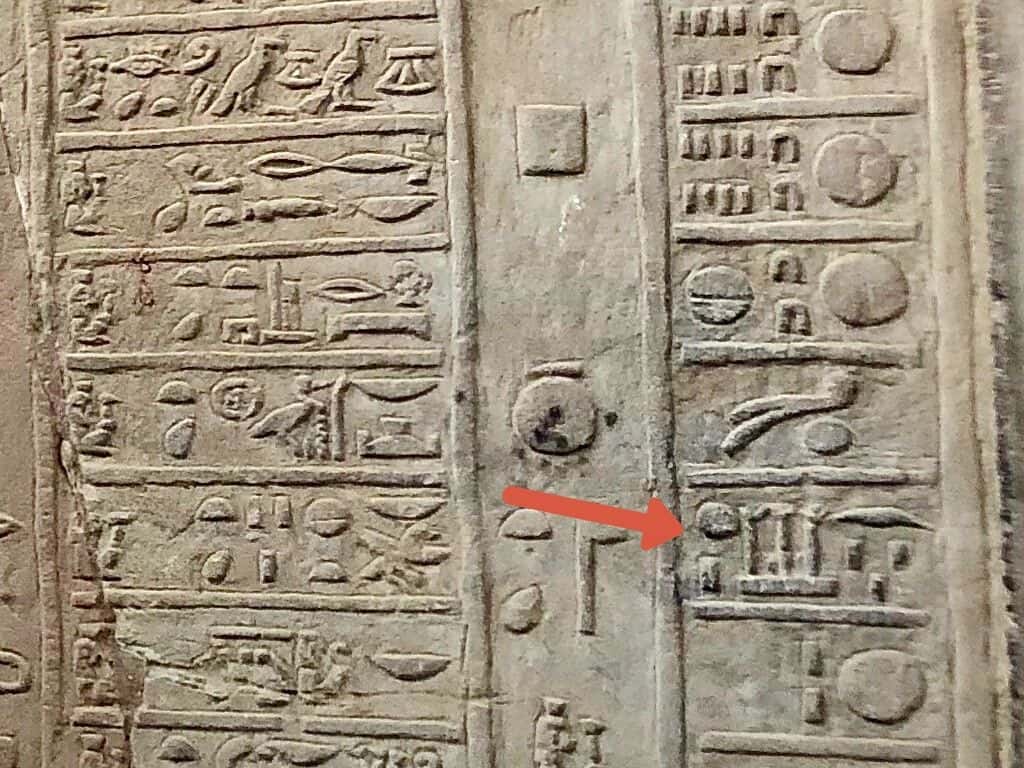
The relief of the ancient Egyptian calendar / What to See at the Temple of Kom Ombo
The Relief of Women Sitting on Birthing Chairs
Intriguingly, the relief of women sitting on birthing chairs presents a depiction of two women employing birthing stools as they usher new life into the world.
These unique pieces of furniture, crafted from sturdy bricks, featured a distinctive design element—a strategically placed hole or cut-out within the seat, facilitating the childbirth process.
A closer examination of the lower woman in the relief reveals an intriguing detail: perched atop her head is a throne-shaped symbol, a hieroglyph that pays homage to the revered goddess Isis.
As the guardian of fertility and motherhood, Isis’s presence in this context underscores the profound connection between childbirth and the divine. It is a testament to the ancient Egyptian belief in the protective and nurturing power of the goddess, a comforting presence during the transformative journey of motherhood.
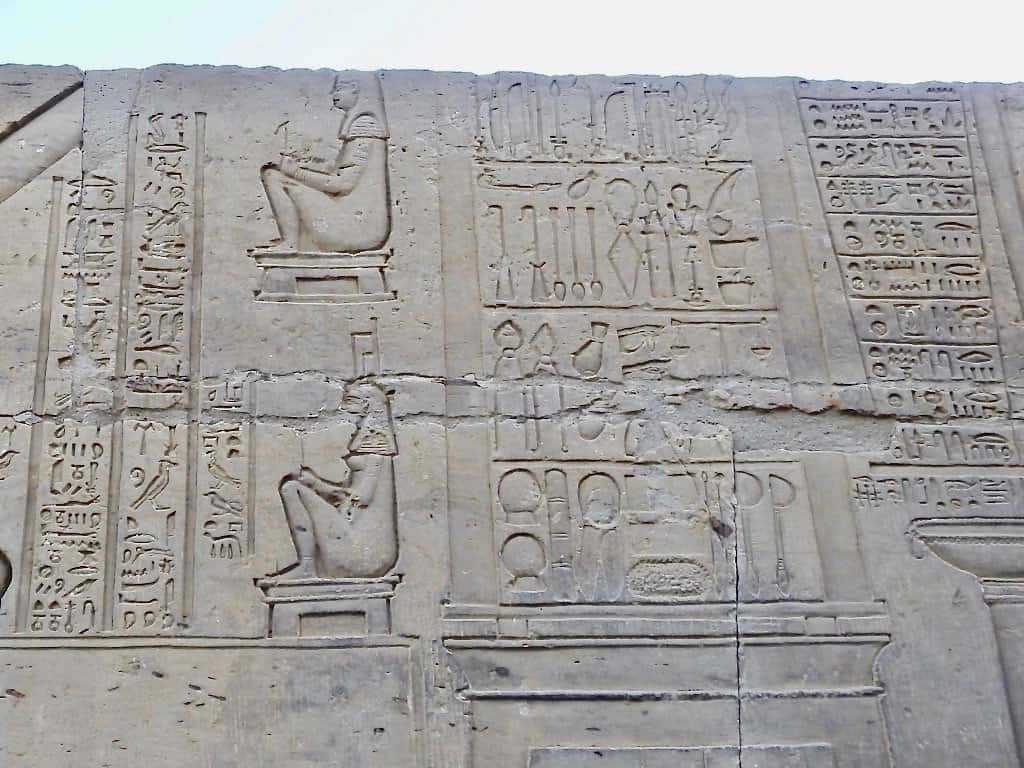
The relief of women sitting on birthing chairs / What to See at the Temple of Kom Ombo
The Reliefs of Surgical and Ritualistic Instruments
Adjacent to the women depicted on birthing stools, an engraving captures an array of intriguing implements, encompassing both medical and surgical tools, and possibly instruments tied to ritualistic practices.
This remarkable relief is believed to be the earliest known representation of instruments related to the field of medicine.
Upon closer examination, one can discern a diverse assortment of items, including forceps, vessels for medicines, written prescriptions, curettes, precision weighing scales, and even cupping glasses, among others.
This collection of tools offers a profound glimpse into the ancient art of healing and the meticulous methods employed by practitioners of the time.
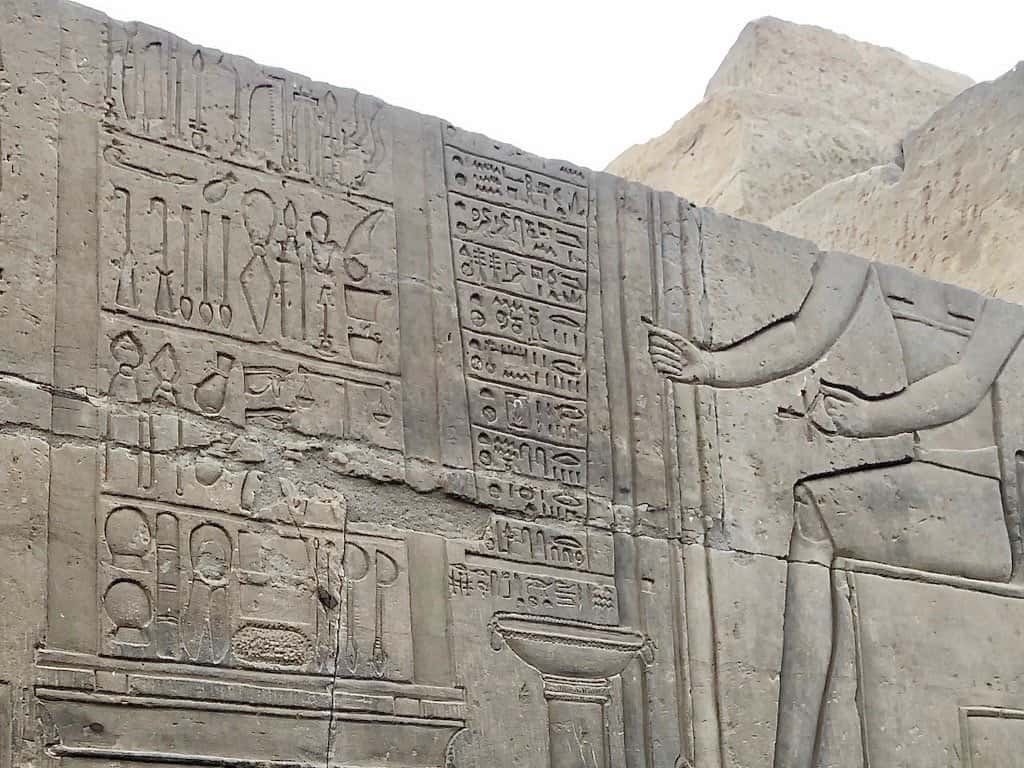
The relief of medical and ritualistic instruments / What to See at the Temple of Kom Ombo
Speculation arises that the Temple of Kom Ombo might have functioned as a sanctum of healing, where the deity Haroeris (Horus the Elder) held a revered position as a divine healer.
Consequently, countless pilgrims may have flocked to this sacred site, seeking solace and remedies for their health afflictions, entrusting their well-being to the temple’s mystic powers.
The intertwining of medicine, spirituality, and devotion in this ancient sanctuary paints a vivid portrait of the multifaceted roles temples played in the lives of the people of antiquity.
The Nilometer
Positioned on the left side of the temple stands a sizable well, complete with a descending staircase—a structure of significant historical importance known as a Nilometer.
Intriguingly, the Nilometer served as a vital tool in the ancient Egyptian toolkit for assessing the anticipated fluctuations of the River Nile’s water levels.
These fluctuations carried profound implications: a water level too low threatened famine, while excessively high waters could lead to destructive floods.
Inside the well, a carefully marked indicator denoted the ideal water level required for a bountiful harvest.

Nilometer at the Temple of Kom Ombo / What to See at the Temple of Kom Ombo
Beyond its role in safeguarding agriculture, the Nilometer played a pivotal role in foreseeing the outcome of the harvest and determining the annual tax rate.
As such, it held a pivotal place in the economic and agricultural management of the region, offering a vital link between the natural world and the well-being of the people.
The Pylon
In its original form, the Pylon of the Kom Ombo Temple boasted a grand double gateway, a testament to the architectural prowess of its time.
While the ravages of history have left us with only the lower remnants of the right-hand section, it remains a site of profound historical significance that should not be overlooked.
Amidst the surviving fragments, an extraordinary relief captures the essence of the past, depicting the Roman Emperor Domitian in a gesture of reverence. In this striking portrayal, Domitian offers sacred offerings to the triad of deities—Sobek, Hathor, and Khonsu—whose presence and influence permeated the temple’s sacred precincts.
This remarkable artistic representation serves as a tangible link between the grandeur of ancient Rome and the enduring spirituality of Egypt.
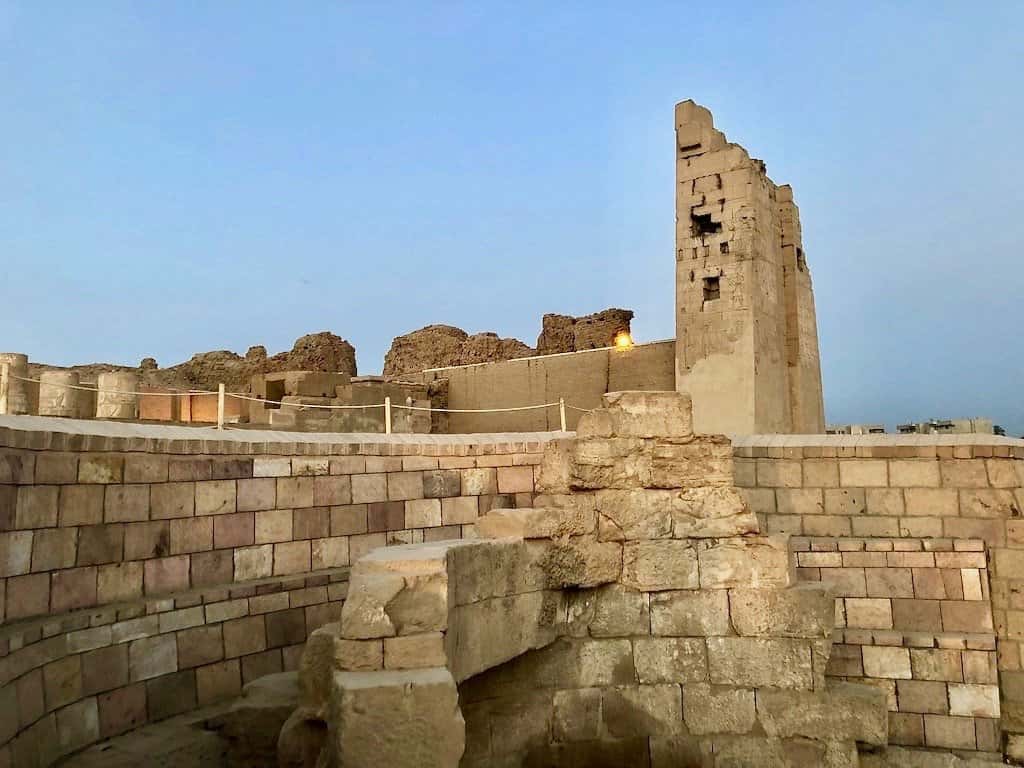
Nilometer at the Temple of Kom Ombo / What to See at the Temple of Kom Ombo
Furthermore, do not miss the opportunity to decipher a lengthy text comprising 52 lines of intricate hieroglyphics. These inscriptions, etched into the stone, contain the written records of a bygone era, preserving the wisdom, beliefs, and stories of the past.
The Crocodile Mummy Museum
Adjacent to the magnificent Kom Ombo Temple stands a remarkable gem, the Crocodile Mummy Museum, beckoning with its intriguing collection that spans the entire life cycle of these revered reptiles.
This museum is not to be missed, and it ranks among the most captivating I have had the privilege to explore during my journeys through Egypt.
Within its walls, you will embark on an educational journey into the fascinating realm of the crocodile god Sobek. Discover the multifaceted aspects of this deity, from his divine significance to the cultural and religious context in which he thrived.
The museum provides a comprehensive and immersive experience that unveils Sobek’s role as the god of the Nile, creator of the world, and protector of the faithful.
As you traverse its halls, you will encounter exquisite votive offerings left by devoted pilgrims who flocked to the temple to pay homage to Sobek. These votives, lovingly crafted and steeped in symbolism, offer a poignant glimpse into the profound spirituality that infused the lives of ancient Egyptians.
Moreover, the museum delves into the intricate process of mummification, shedding light on the meticulous methods employed in preserving these revered reptilian creatures for their journey into the afterlife.
The journey through this museum is a captivating odyssey through time, culture, and spirituality—a testament to the rich tapestry of history that Kom Ombo has to offer.
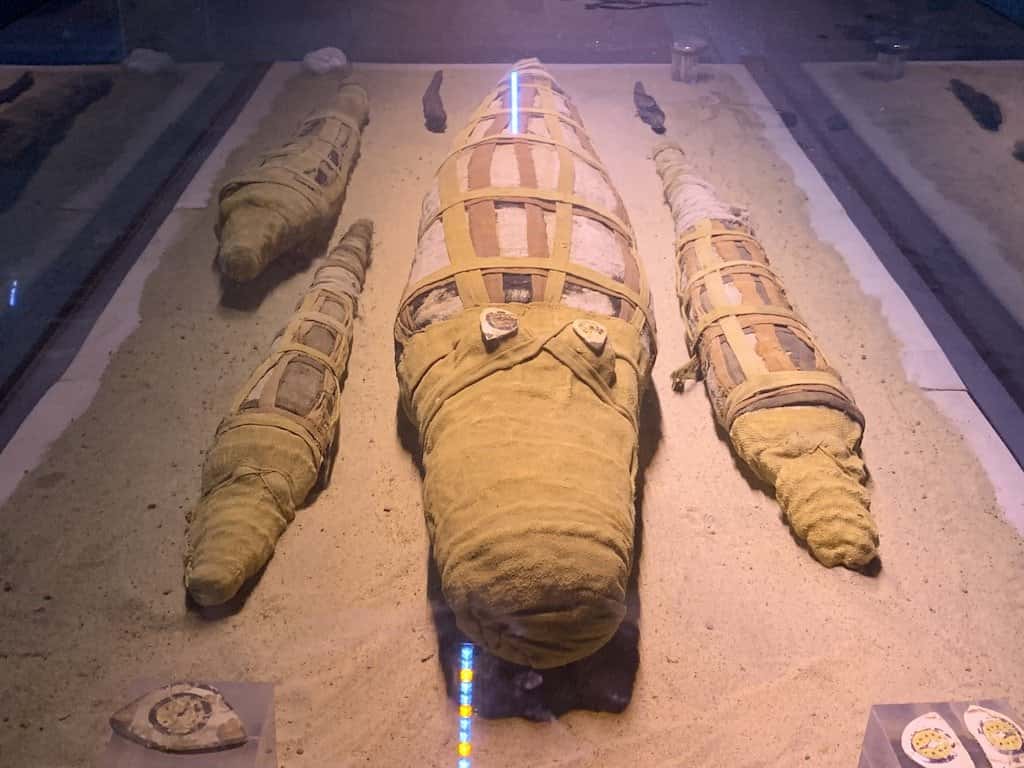
Crocodile Mummy Museum in Kom Ombo / What to See at the Temple of Kom Ombo
Intrepid Scout's Tips for Visiting the Temple of Kom Ombo
- Timing is Key: Plan your visit early in the morning or late in the afternoon to avoid the scorching midday heat. This also allows for fewer crowds, providing a more serene experience.
- Dress Respectfully: As with most religious sites, dress modestly. Wear clothing that covers your shoulders and knees as a sign of respect for the temple’s sacredness.
- Bring Sun Protection: Egypt’s sun can be intense, so pack essentials like sunscreen, a wide-brimmed hat, and sunglasses to shield yourself from the sun’s rays.
- Stay Hydrated: The desert climate can be dehydrating, so drink water regularly.
- Engage with a Guide: Consider hiring a local guide who can provide in-depth insights into the temple’s history, symbolism, and significance. They can enrich your experience with their knowledge.
- Purchase Souvenirs Mindfully: Support local artisans by purchasing souvenirs from nearby shops. Bargain respectfully, but keep in mind that many rely on tourism for their livelihoods.
- Traveling in Egypt can be challenging, even for the most seasoned nomad. There’s so much to know about Egypt and consider before planning a trip.
Make sure to read 14 Egypt travel tips, to help you make the most of your time, avoid possible challenges, and ensure you have a safe and enjoyable stay in Egypt.
You Might Also Like:
How to Visit and What to See at KHAN EL-KHALILI BAZAAR in Cairo
Perfect 7-Day Egypt Itinerary for First Visit (Cairo, Aswan, Luxor, Abu Simbel)
What to See at the TEMPLE of HORUS at EDFU (5 Things You Can’t Miss)
What to See at the TEMPLE of KOM OMBO, Egypt (9 Things You Can’t Miss)
How to Visit Abu Simbel: Everything You Need to Know to Plan Your Visit
How to Visit and What to See at the TEMPLE of PHILAE in Aswan
Best Day Trip from Cairo – Dahshur, Memphis, and Saqqara (Maps+Photos)
19 Must-See Things at Egyptian Museum in Cairo (+Practical Tips)
Did You Find This Useful?
Why Not Save What to See at the Temple of Kom Ombo to Your Pinterest Board!
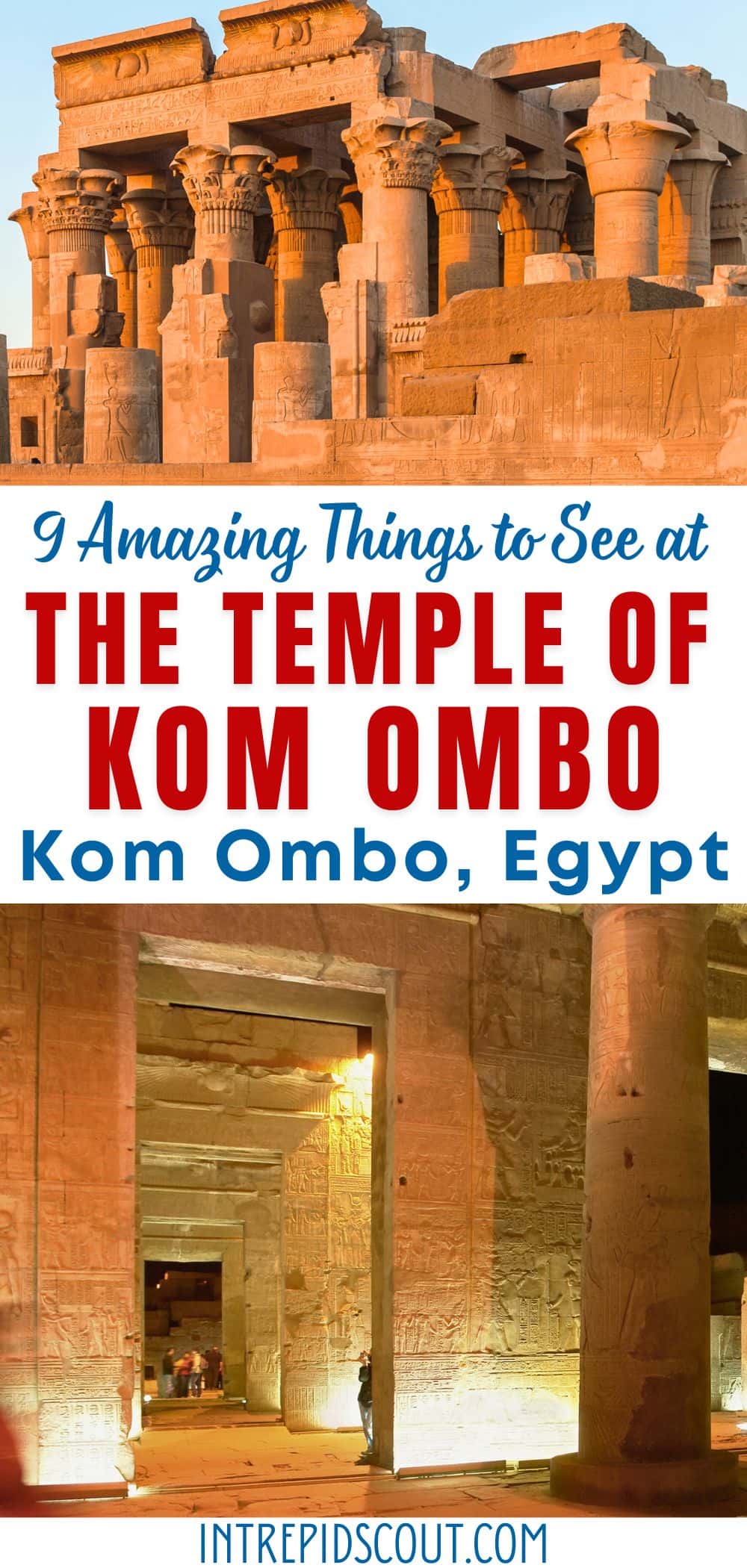
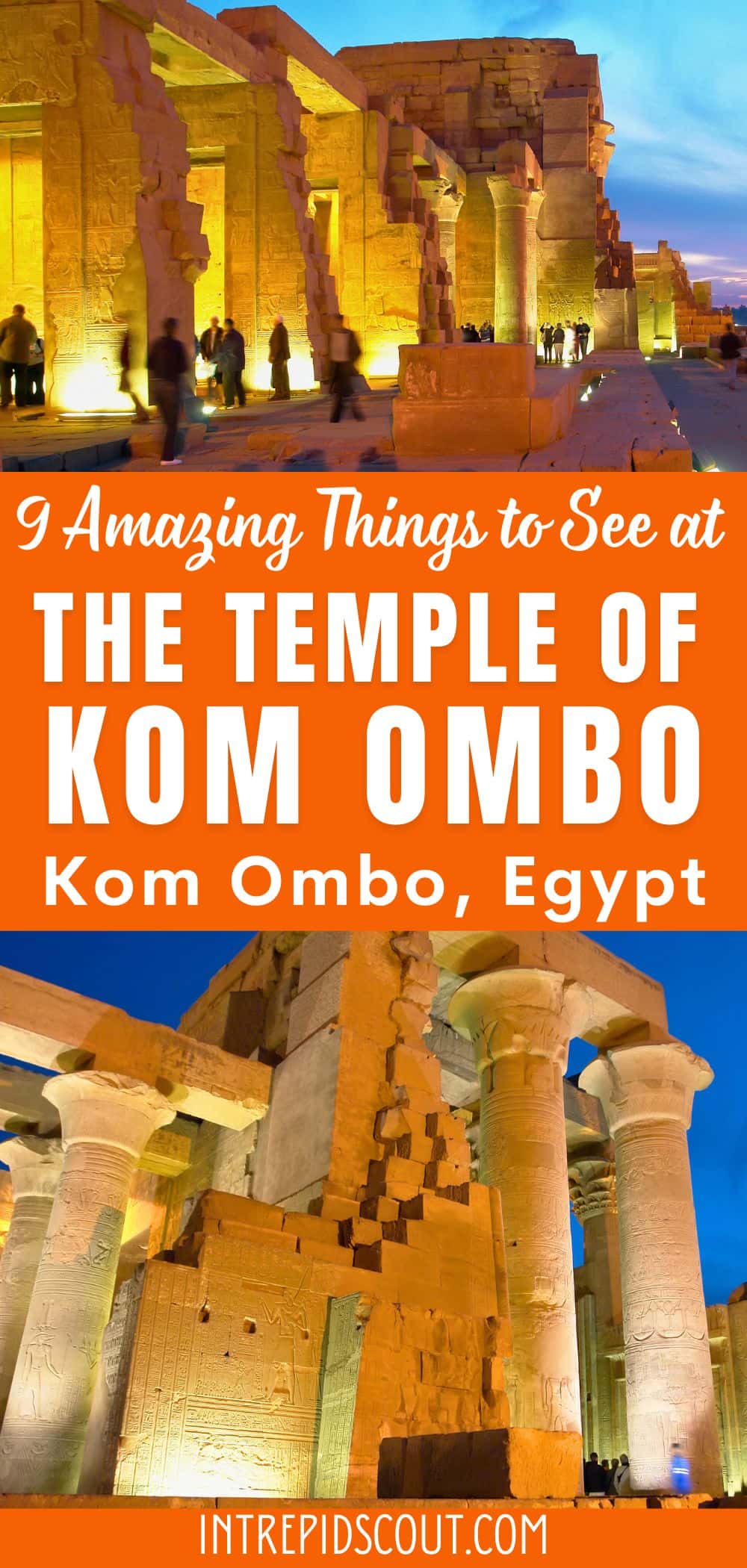
Now, It Is Your Turn, I Would Like to Hear Back from You!
Are you planning on visiting the Temple of Kom Ombo?
Please let me know! Drop me a quick comment right below!
Also, click on any of the images below to get inspired and to help you with the planning process for your trip to Egypt!
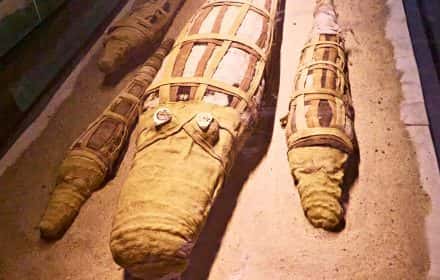
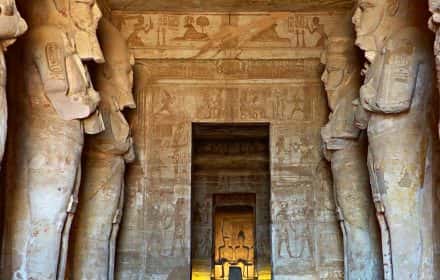
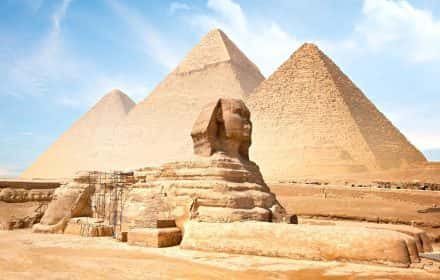
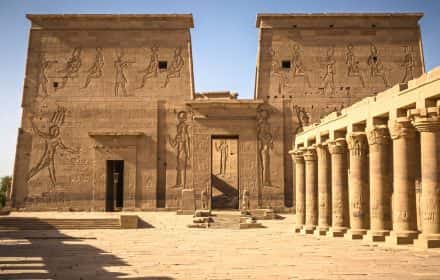
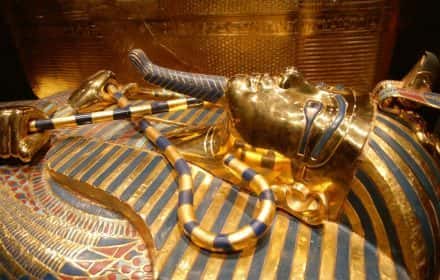
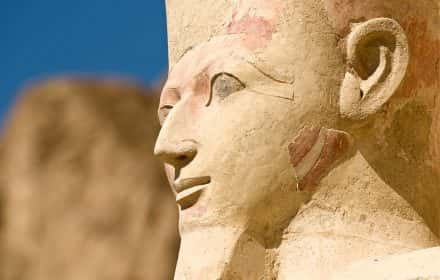
Comments:
2 thoughts on “What to See at the Temple of Kom Ombo (9 Amazing Things You Can’t Miss)”
My husband and I will be visiting Egypt July 2021 and yes, we are going to the Temple. Thank you for this, I will definitely put all of this on my list.
Hi Suzette,
Good luck with your trip to Egypt. I am excited for you.
Please let me know if you need any additional information.
I am here, if you need anything!